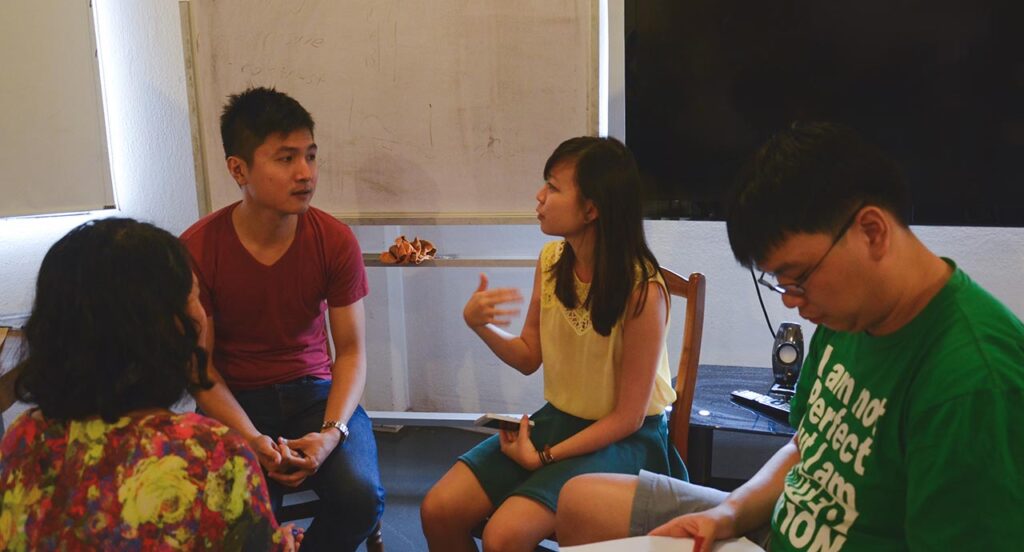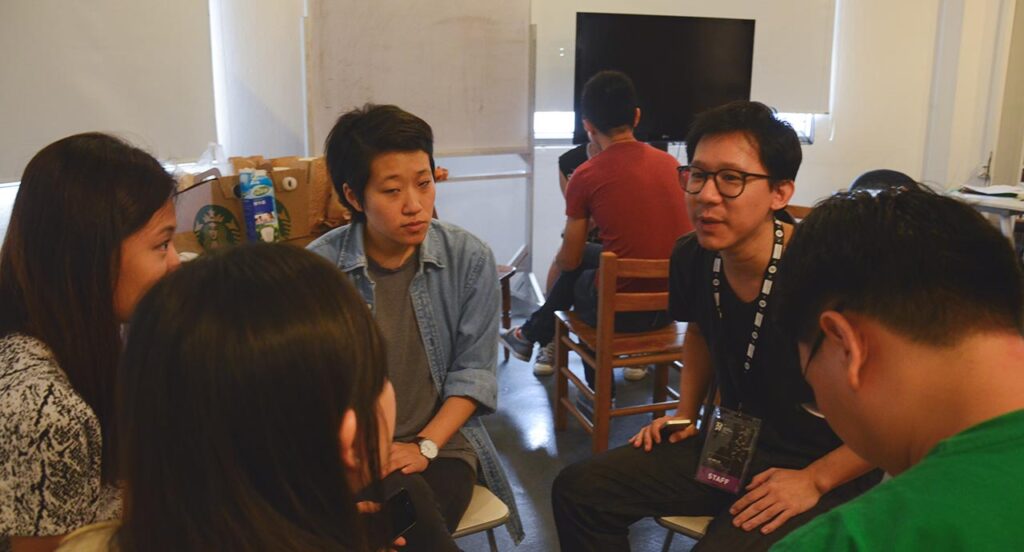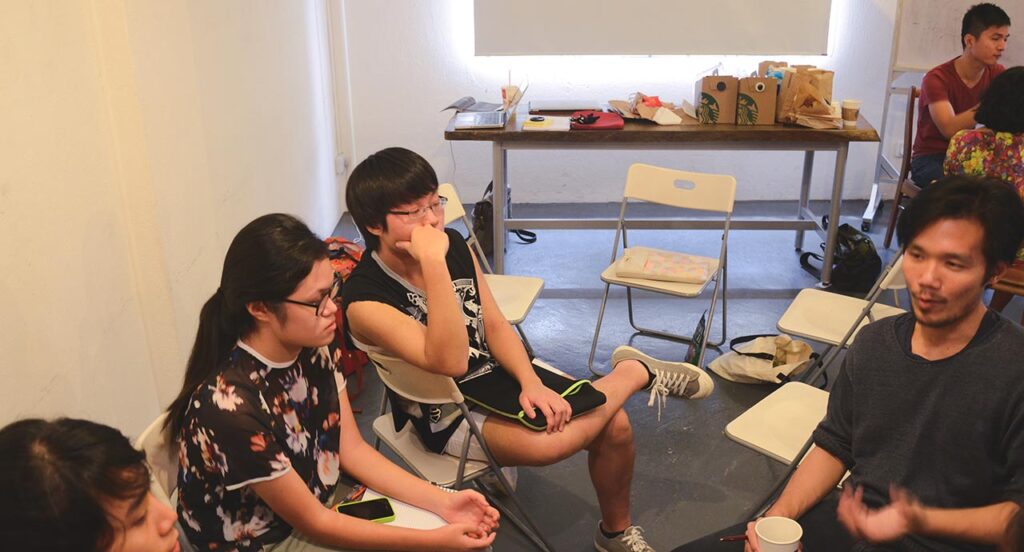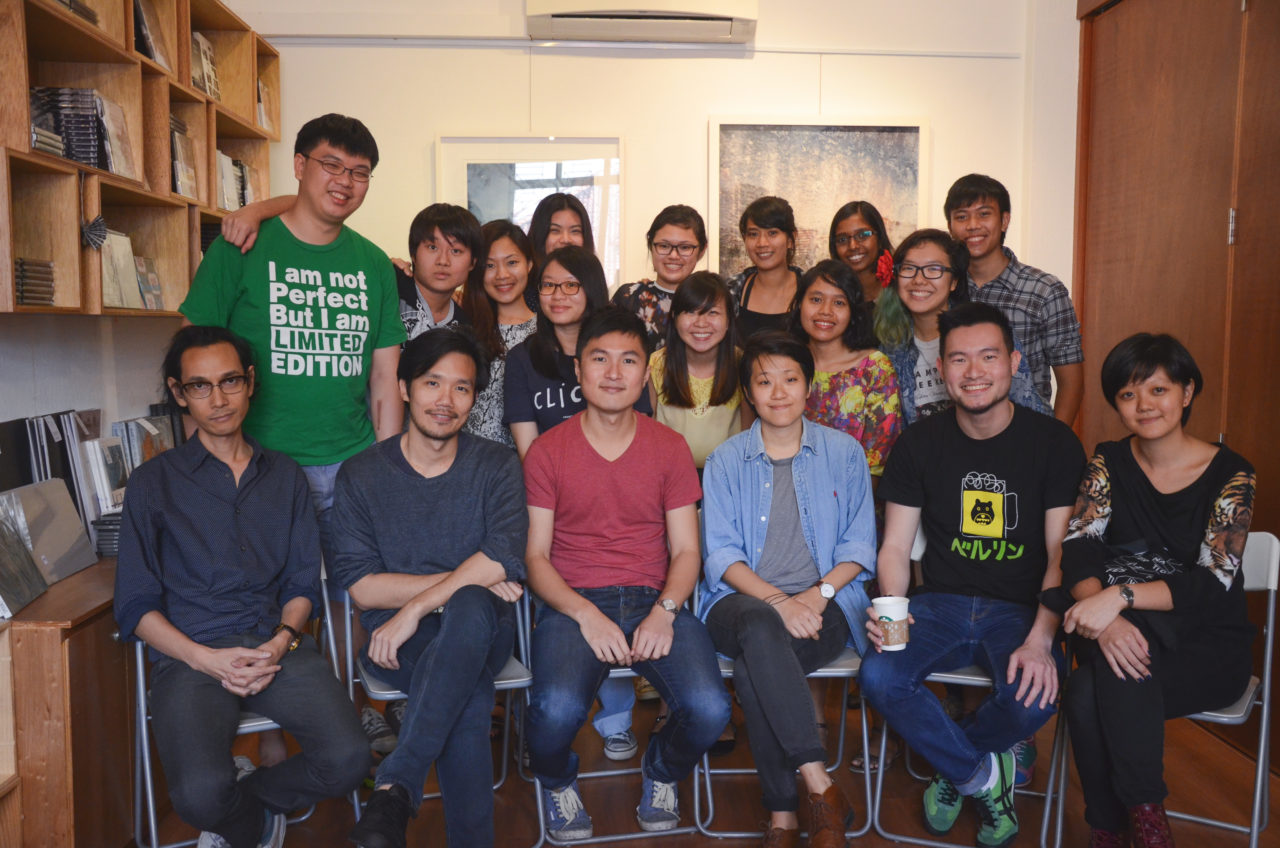Creating Conversation: A Session with Singaporean Filmmakers
We had imagined a panel interview with the filmmakers, but decided to set up clusters of chairs to hop around small group conversations instead. It’s always a casual setting with the youth jurors, and we hoped the informality would help illuminate our burning questions (and dispel any possible awkwardness!). It was an unfounded concern of course; though the artists behind the Singapore shorts express ambition when it comes to their craft, they were extremely humble – and personable – people.
The first to greet us was Tan Wei Keong, director of Pifuskin. He wore the friendliest smile, striking me as an optimist with no traces of the confused self and disillusionment that floats in Pifuskin. “No, I don’t think there’s really anyone else doing this in Singapore…” Wei Keong conceded, that animation is a growing industry clearly for companies like Lucas Films, but not as evidently for less conventional animators like himself. Yet he continues to pursue this passion full time, sincerely anticipating the opportunities to come – possibly a project at the next Singapore Writer’s Festival!

Sharing the struggles of (student) filmmakers in Singapore was Adar, producer of Last Trip Home. With technical hiccups and script requirements, an initial 13-page script was condensed to 4 pages in their final film. Thankfully, the end product remains a salient exposition of the foreign Chinese in a foreign land, with real experiences massaging the narrative. Adar recounted how they saw homeless people dangle Christmas lights at their beds outside the car park, and borrowed the idea to create one of the most beautiful scenes in Last Trip Home.

Also describing a number of interesting anecdotes – like how a heated generator nearly caused an explosion in Pulau Ubin! – were Kirsten Tan and Lai Weijie, director and producer of Dahdi. Seeing the two converse (at times banter), the rapport built and residual from making the film was obvious. When asked in jest if they had private grievances, both admitted there were times when they disagreed, – such as debating whether to risk 6-figure equipment for a perilous boat scene, which Kirsten obviously won – but there was always an understanding that they were fighting for their role.

As Jenson wondered about Kirsten’s connection to the Rohingyas, she candidly expressed her infuriation that was the spark for the film, and how it compelled her to shed light on the question of moral versus legal responsibility: “It is within our means […] to surely be able to do something small as humans to help them.”
Echoing similar sentiments was Tan Shijie, director of Not Working Today, as he advised a group of youth jurors: “the marginalized are always a great source of story, and always worth telling”. While Shijie accounts where Apu Ahasan is now – back in Bangladesh, ready to marry a bride – the inconclusive ending in the film implies the very real unsettlement in such cases. Shijie conceded that he is still far from “finding his style”; perhaps it will dawn when he makes a feature film, or possibly never since he finds himself continually wanting to try new things.

“His style ah, very in-your-face lor” quipped Wei Keong about Michael Tay, director of Severance. With no words to aptly dub his approach, Michael half-concurred with “thanks ah thanks ah”. Turns out the two filmmakers were already friends in the pioneer batch of ADM (Art, Design and Media School). I laughed, because yes, I did find Michael’s Severance a tad in-your-face, yet conceivably since it describes religious issues that are hardly spoken in Singapore. Hearing Michael’s thoughts provided me a different take on the film, as it did for fellow youth juror, Sharanya: “Talking to Michael has made me see Severance as more than just a film on religious issues, it is also a call for Singaporeans to discuss some tough questions on latent tensions between religious groups here.”

What all the filmmakers shared, was the desire to begin a conversation; be it on silent – and silenced – foreigners in Singapore or delicate matters of religion. Adar confessed that filmmaking can be a rather enclosed activity, so discussions are very much appreciated. Especially for animation creators who work in isolation, Wei Keong chimed in that any response is surely hopeful, whether good or bad. “The process of filmmaking is an analysis of yourself”, offered Shijie, explaining that only when his work is complete, does he realize his influences.
As fellow youth juror Li Ling sums it up, “I love that we were given the privilege of bridging the gap between filmmaker and spectator, both literally and figuratively. Our exchanges built upon each other to provide multiple dimensions to approach their films.” Indeed, the session has let us delve deeper into the minds of the filmmakers, at the same time realizing how complex the art of filmmaking is.


